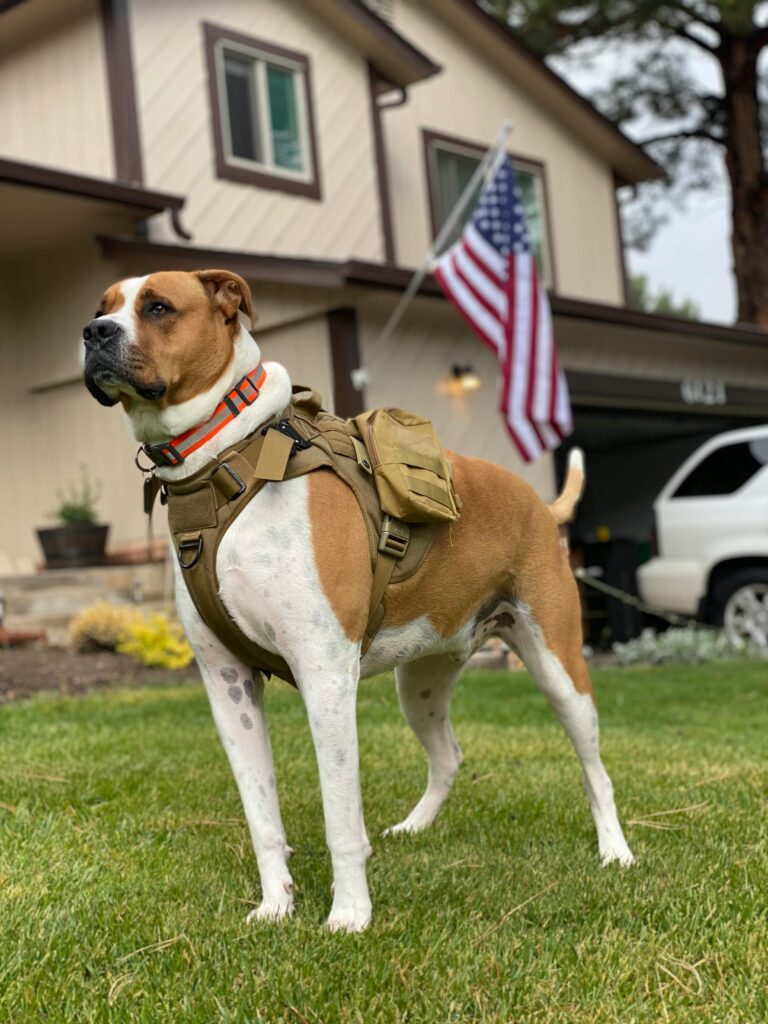Pet Tech Gadgets: How Gadgets Are Transforming Pet Care
Pet Tech Gadgets: In today’s world, technology touches nearly every aspect of our lives, and pet care is no exception. With an ever-growing array of gadgets designed specifically for our furry companions, pet tech is transforming the way we care for, monitor, and interact with our pets. From smart feeders to GPS trackers, these innovations are making pet ownership more convenient and enhancing the overall well-being of our beloved animals. In this article, we’ll explore the various ways pet tech is revolutionizing pet care and what you need to know to stay ahead of the curve.
1. Smart Feeders: Ensuring Proper Nutrition
One of the most significant advancements in pet tech is the development of smart feeders. These devices allow pet owners to automate feeding schedules, ensuring their pets are fed the right amount at the right time, even when they are not home.
Pet Tech Gadgets: How Smart Feeders Work
Smart feeders typically connect to your smartphone via Wi-Fi, allowing you to control feeding times and portion sizes remotely. Some models also include cameras, enabling you to monitor your pet during mealtime. This feature is particularly useful for pets with specific dietary needs or those prone to overeating.
Benefits of Smart Feeders:Pet Tech Gadgets
- Automated Feeding: Ensures pets are fed on time, even when you’re away.
- Portion Control: Helps maintain a healthy weight by regulating food intake.
- Monitoring: Provides peace of mind by allowing you to check in on your pet.
For more information on the latest smart feeders, check out this comprehensive guide that covers the best options available on the market.
2. Wearable Tech: Keeping Tabs on Your Pet’s Health
Wearable technology isn’t just for humans anymore. From fitness trackers to health monitors, wearable tech for pets is becoming increasingly popular. These devices help pet owners track their pet’s activity levels, sleep patterns, and overall health.
Types of Wearable Pet Tech

- Activity Trackers: These devices monitor your pet’s daily activity, including steps taken, calories burned, and distance traveled. They can be particularly useful for ensuring that your pet gets enough exercise.
- Health Monitors: Some wearables go beyond activity tracking by monitoring vital signs, such as heart rate and respiratory rate. This information can be invaluable for detecting early signs of health issues.
Benefits of Wearable Tech: Pet Tech Gadgets
- Health Monitoring: Helps detect potential health problems early by tracking changes in activity and vital signs.
- Exercise Management: Ensures your pet is getting the right amount of physical activity.
- Behavior Insights: Provides insights into your pet’s behavior, helping you better understand their needs.
3. GPS Trackers: Never Lose Your Pet Again
Losing a pet is every pet owner’s worst nightmare. Fortunately, GPS trackers for pets can help ensure that if your pet wanders off, you’ll be able to locate them quickly.
How GPS Trackers Work
GPS trackers attach to your pet’s collar and use satellite signals to determine their location. The location data is then transmitted to your smartphone, allowing you to see where your pet is in real-time.
Benefits of GPS Trackers
- Real-Time Location: Provides instant access to your pet’s location, reducing the time it takes to find them if they get lost.
- Geo-Fencing: Allows you to set up virtual boundaries. If your pet crosses the boundary, you’ll receive an alert.
- Peace of Mind: Knowing you can track your pet at any time provides reassurance, especially for outdoor pets.
For a detailed comparison of the best GPS trackers for pets, see this review of top-rated devices.
4. Interactive Toys: Keeping Pets Entertained
Boredom can lead to destructive behavior in pets, but interactive toys can help keep them entertained and mentally stimulated. These gadgets are designed to engage your pet in play, even when you’re not around.
Types of Interactive Toys
- Automatic Ball Launchers: These devices throw balls for your dog to fetch, keeping them active and engaged.
- Puzzle Toys: Designed to challenge your pet’s mind, puzzle toys often involve hiding treats that your pet must figure out how to retrieve.
- Laser Toys: Laser pointers that move automatically can provide endless entertainment for cats, encouraging them to chase and pounce.
Benefits of Interactive Toys(Pet Tech Gadget)
- Mental Stimulation: Keeps your pet’s mind sharp by challenging them with puzzles and games.
- Physical Activity: Encourages exercise, helping to prevent obesity and related health issues.
- Reduced Boredom: Helps prevent destructive behavior by keeping your pet occupied.
5. Pet Cameras: Staying Connected While Apart
For pet owners who spend long hours away from home, pet cameras offer a way to stay connected with their pets. These cameras allow you to watch, talk to, and even play with your pet remotely.
How Pet Cameras Work
Pet cameras connect to your home Wi-Fi and stream video to your smartphone. Many models include two-way audio, allowing you to hear and talk to your pet. Some even have treat dispensers, so you can reward your pet from afar.
Benefits of Pet Cameras
- Remote Monitoring: Lets you keep an eye on your pet while you’re away, ensuring they are safe and happy.
- Two-Way Communication: Allows you to interact with your pet, helping to reduce their anxiety and loneliness.
- Treat Dispensing: Enables you to reward your pet for good behavior, even when you’re not home.
Discover the top pet cameras on the market in this article to find the best option for your needs.
6. Automated Litter Boxes: Simplifying Cat Care
Cleaning the litter box is a chore that many cat owners dread. Automated litter boxes can help by taking care of this task for you, ensuring a clean and odor-free environment for your cat.
How Automated Litter Boxes Work
These devices use sensors to detect when your cat has used the litter box. After a set period, the litter box automatically scoops and separates waste, depositing it into a sealed compartment for easy disposal.
Benefits of Automated Litter Boxes
- Convenience: Reduces the need for daily scooping, saving time and effort.
- Odor Control: Seals waste in a compartment, minimizing odors.
- Hygiene: Ensures a clean litter box, which can help prevent urinary and behavioral issues in cats.
Check out this review of the best automated litter boxes to find the right one for your cat.
7. Smart Doors: Controlling Pet Access
Smart pet doors offer a convenient solution for allowing your pet to come and go as they please while keeping unwanted animals out. These doors use technology to recognize your pet and grant access only to them.
How Smart Doors Work
Smart pet doors typically use a microchip, collar sensor, or app to identify your pet. When your pet approaches, the door unlocks and allows them to pass through. Some models also allow you to control access remotely via your smartphone.
Benefits of Smart Doors
- Controlled Access: Ensures that only your pet can use the door, keeping out stray animals and intruders.
- Convenience: Gives your pet the freedom to go outside without you having to open the door.
- Remote Control: Allows you to lock or unlock the door remotely, giving you control over your pet’s access even when you’re not home.
8. Pet Tech for Health Monitoring: A Vet’s Best Friend
Advancements in pet tech are also making it easier for veterinarians to monitor and diagnose health issues. From telemedicine platforms to diagnostic devices, these tools are enhancing the quality of care that pets receive.
Telemedicine for Pets
Telemedicine platforms allow pet owners to consult with veterinarians remotely. These services can be especially useful for minor issues or follow-up appointments, saving time and reducing stress for both pets and owners.
Diagnostic Devices
Some diagnostic devices, like portable ultrasound machines and digital stethoscopes, are now available for home use. These gadgets allow pet owners to monitor their pet’s health and share data with their vet, facilitating early diagnosis and treatment.
Benefits of Health Monitoring Tech
- Convenience: Reduces the need for in-person vet visits, saving time and stress.
- Early Detection: Allows for early diagnosis of health issues, improving treatment outcomes.
- Continuous Monitoring: Provides real-time data that can help vets make more informed decisions about your pet’s care.
9. Pet Tech and Training: Improving Behavior
Training your pet is essential for their safety and well-being, and technology is making it easier than ever to teach good behavior. From training collars to apps, pet tech is providing new tools for effective training.
Training Collars: Pet Tech Gadgets
Training collars, which use sound, vibration, or mild static to correct behavior, can be controlled via remote or smartphone app. These devices are useful for reinforcing commands and correcting undesirable behavior, such as excessive barking or pulling on the leash.
Training Apps: Pet Tech Gadgets
Training apps offer step-by-step guides, video tutorials, and progress tracking to help you train your pet effectively. These apps can be particularly helpful for new pet owners or those training a pet for the first time.
Benefits of Training Tech
- Consistency: Provides consistent reinforcement of commands, improving training outcomes.
- Convenience: Allows you to train your pet remotely or on-the-go, making training more flexible.
- Customization: Many devices allow you to adjust settings to suit your pet’s temperament and training needs.
10. The Future of Pet Tech: What’s Next?
As technology continues to evolve, so too will the gadgets and tools available for pet care. The future of pet tech promises even more innovations that will make pet ownership easier, safer, and more enjoyable.
AI-Powered Devices
Artificial intelligence (AI) is expected to play a significant role in the future of pet tech. AI-powered devices could analyze your pet’s behavior, predict their needs, and even suggest personalized care routines.
Advanced Health Monitoring
The next generation of health monitoring devices could include more advanced sensors that provide detailed insights into your pet’s health. These devices could detect subtle changes in your pet’s condition, allowing for earlier intervention and improved outcomes.
Smart Homes for Pets
The concept of a smart home could extend to pets, with integrated systems that control feeding, access, entertainment, and health monitoring. These systems could be managed through a single app, providing a seamless and comprehensive approach to pet care.
Questions and Answers
1. What is the best pet tech for monitoring my pet’s health?
Answer: Wearable health monitors are among the best options for tracking your pet’s activity levels, heart rate, and other vital signs. These devices can help you detect early signs of health issues.
2. How can I keep my pet entertained while I’m at work?
Answer: Interactive toys, such as automatic ball launchers and puzzle feeders, are great for keeping your pet entertained and mentally stimulated when you’re not home.
3. Are smart feeders worth the investment?
Answer: Yes, smart feeders can be particularly useful for pet owners with busy schedules or pets with specific dietary needs. They automate feeding times and portion sizes, ensuring your pet is properly fed.
4. Can I track my pet’s location with a GPS tracker?
Answer: Yes, GPS trackers allow you to monitor your pet’s location in real-time, providing peace of mind if your pet wanders off.
5. What are the benefits of using a pet camera?
Answer: Pet cameras allow you to monitor, interact with, and even reward your pet while you’re away. They help reduce anxiety for both you and your pet.
6. How do automated litter boxes work?
Answer: Automated litter boxes use sensors to detect when your cat has used the litter box and then automatically scoop and seal waste in a compartment, making litter box maintenance easier.
7. Can pet tech help with training?
Answer: Yes, training collars and apps provide tools and resources for effective pet training, helping you reinforce good behavior and correct issues.
8. Is pet tech suitable for all pets?
Answer: Most pet tech is designed for common household pets like dogs and cats. However, some gadgets are also suitable for other animals, such as birds or small mammals.
9. What is the future of pet tech?
Answer: The future of pet tech will likely involve AI-powered devices, more advanced health monitoring tools, and smart home systems tailored to pets.
10. Where can I find the latest pet tech?
Answer: You can find the latest pet tech products at major retailers, online marketplaces, and specialty pet stores. For reviews and recommendations, check out pet tech blogs and websites.
References
- American Veterinary Medical Association (AVMA)
- ASPCA
- PetMD
- Rover.com
- The American Society for the Prevention of Cruelty to Animals (ASPCA)
Pet tech is undoubtedly transforming the way we care for our pets, making life easier for owners and improving the well-being of animals. By staying informed about the latest gadgets and innovations, you can ensure that your pet enjoys a healthy, happy, and enriched life.
Thanks for reading and have a great day!
please post your thoughts in the comments section if you have any.please feel free to share!


1 Comment
keep up the good work.